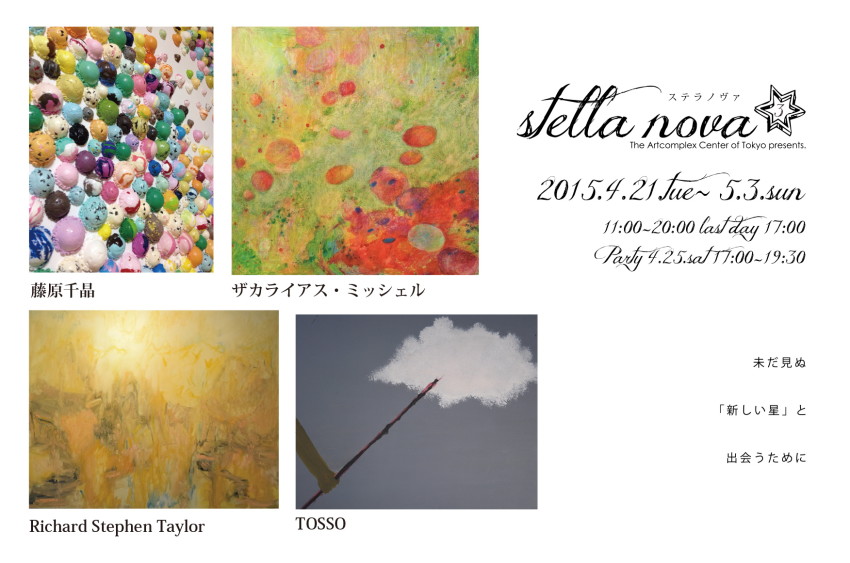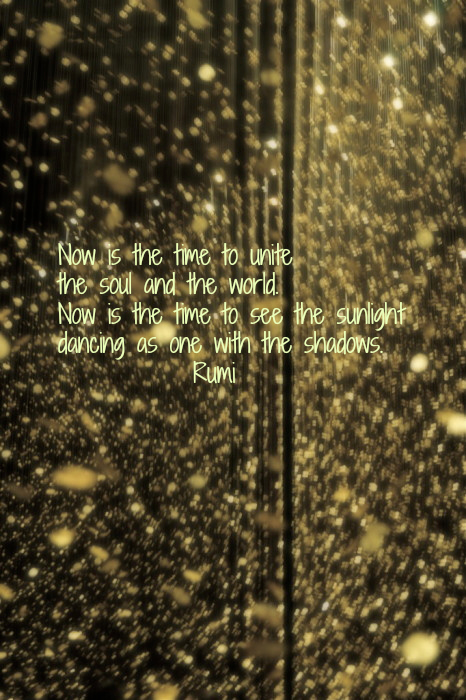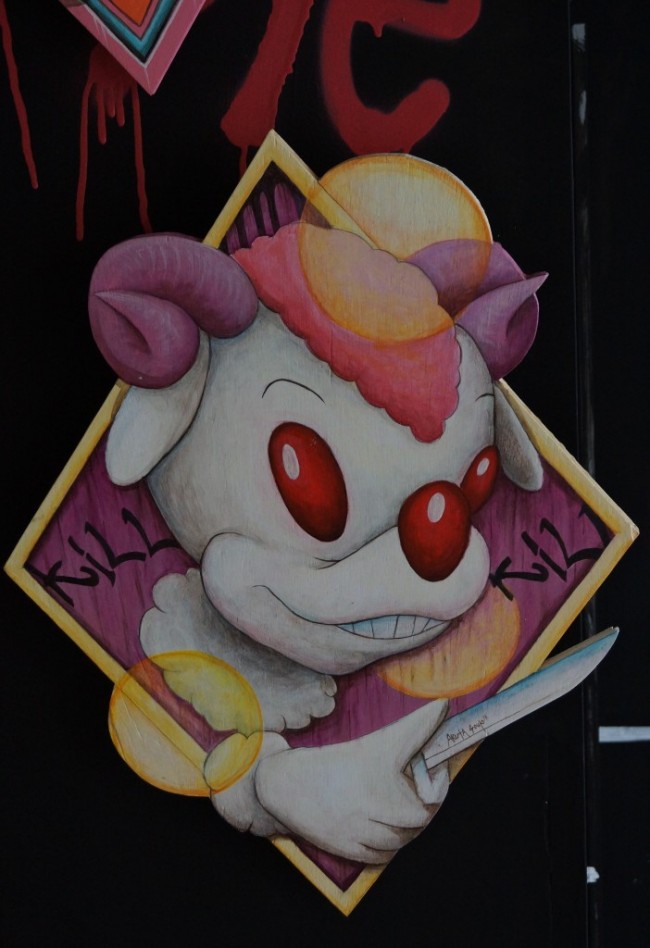Tag: Tokyo art
Light is Time
Forgotten Bction Feline
BCTION Twiggy
Flipside of Morning TV
Fragile Memories
Because I remembered Arthur Huang’s Memory Walks from Art Byte’s show at Hagiso, I popped by the opening and took a few pictures. The photos were gorgeous, and I still love the concept that he had for the drawings on the eggs. (I do not know how he stores them so they do not get smashed. They are incredibly fragile, right?) I will let Huang explain in his own words what he was doing.
“Tokyo Memory Walks” are drawings on eggshells which represent a walk that I have taken this year – such as going from home to the convenience store, the train station to a museum, or a bus stop to work. These drawings are made one day or more after each walk.
For each drawing, I start at the top of the eggshell and trace the route that I took from memory. In the course of drawing, I also use symbols to indicate markers that I encounter along the walk, such as stairs, elevators, or doors. One string of eggshells represents one day of walks. The eggs are arranged from morning to evening starting from top to bottom.
“Kojimachi Interstices” is a series of 57 composite digital images created while documenting the alleyways between buildings around Kojimachi Collection, Kojimachi Station, and the surrounding Kojimachi area. Alleyways are often overlooked as we go about our daily lives. Each composite image is made up of layers of photographs for all the alleyways in a block. The layers of photographs are digitally manipulated by altering the transparency of each layer to transform these overlooked spaces into something new. For this exhibition, fourteen of the “Kojimachi Interstices” are installed as large format inkjet prints representing different parts of the Kojimachi area. The entire series can be viewed in the “Kojimachi Interstices” portfolio or upon request.
The venue was obviously not the right kind of space to show off the photos but it was part of the neighbourhood that he recorded in these pieces. Community support is good, right?
My snapshot has added a few more layers of images to his photos. The layers are intricate and surprisingly delicate for layers and layers of photos of urban dwellings. He supposedly had a hard time deciding between the matte and the glossy paper, but the glossy was the right decision. It is interesting how people now try to replicate what the see on their computer screens. That might have been one of the original reasons for his choice but I think it helped the photos pop off the walls in that crowded and busy space.
 Friends and other local artists, including Lori Ono, Koubou Deeanna, and Ruriko Clarkson, were there to offer support.
Friends and other local artists, including Lori Ono, Koubou Deeanna, and Ruriko Clarkson, were there to offer support.
And Huang was there to chat and answer any questions. If you want to try drawing your own walks around Tokyo by memory, he is giving a workshop this weekend on August 23 and 24.
I Don’t Know About My Dreams Anymore
I popped by 3331 Arts Chiyoda yesterday to see the work of one of their current artists in residence, Joani Tremblay. A few weeks ago I had mistakenly thought her work was on view but in reality Tremblay had just arrived and had yet to make some artwork. Why did I go back? I had to show support for my fellow Canadian artist of course! She is from Montreal and currently also working on her Masters of Fine Arts at Concordia University. It takes bravery to leave your family and responsibilities to do a month-long residence in another country. Like me, she also had a background in printmaking but had been primarily working on drawings recently.
Once a printmaker, always a printmaker. As you can see, she has the eye for detail and the love of paper that many printmakers never lose even when they work in different media. It becomes a part of you.
 I Don’t Know About My Dreams Anymore is a large work on paper. She mixed ink drawing with embroidery and she punctured the paper with her needle. Stiff paper is really difficult to embroider! It is not pliable and can crack as you bend it to push the needle in and out. She also had to roll the edges of the paper while she worked on the middle. The marks look so simple but take so long to make. She purposefully hung the drawing, so viewers could see the thread in the back and realize how much of it was actually embroidered. Doesn’t the front remind you of Julie Mehretu‘s work and the back of Cy Twombly‘s drawings?
I Don’t Know About My Dreams Anymore is a large work on paper. She mixed ink drawing with embroidery and she punctured the paper with her needle. Stiff paper is really difficult to embroider! It is not pliable and can crack as you bend it to push the needle in and out. She also had to roll the edges of the paper while she worked on the middle. The marks look so simple but take so long to make. She purposefully hung the drawing, so viewers could see the thread in the back and realize how much of it was actually embroidered. Doesn’t the front remind you of Julie Mehretu‘s work and the back of Cy Twombly‘s drawings?
While in Japan, she naturally wanted to play around with washi, Japanese paper. She looped some coated mizukihiki cords used to make traditional decorations, liked that shape, and then embroidered more white loops on bluish-black washi. The cool tones of the blues and the loops of the white net remind one of the ocean and how cool it feels on a hot summer day. Tremblay used those colours before she came to Japan so she was not familiar with how blues can be seen almost everywhere in Japan during the hot summers as a way to mentally cool oneself.
The residency gave her a chance to play around in a large studio for a few weeks. She played with the new types of paper and tried some new marks, such as the hanging loops in this drawing. One month is not a long time to finish large, labour-intensive pieces! With no familiar faces around to distract around her, she managed to get quite a bit of work done. Hmmm, maybe that os what I need to do. Tokyo would be too close for me though. Maybe I should check if there any opportunities in Korea? Or somewhere tropical like Guam?
She and I chatted a bit about the differences between Japan and Canada. Although 3331 Arts Chiyoda is an artist-run space in a renovated elementary school and tries to include an educational program for the local community, most places in Japan are not like that. She was surprised to learn that artists in Japan usually have to pay to have a show in a gallery, and I remember having that same shock when I first came to Japan. It is the reverse in Canada; Canadian galleries pay artists to have shows. Canada has CARFAC is a non-profit organization that represents the interests of artists throughout the country. Think of it as an artists union. I do not think Japan has anything like that. Canada has mentoring systems i place throughout the country; Japan tends to work on a sempai–kohei system where teachers or older members nurture their students or others who are younger and went to the same class or school or belong to the same group of artists. Those relationships can be quite formal, and respect must be paid to those who came before you regardless of talent or likability. Most say they do not like those traditional systems but yet those relationships are the ones that continue to ease the way in contemporary Japan. Things are slowly changing…















